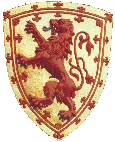 |
 |
 |
 |
 |
 |
 |
 |
| Coat of Arms |
| Traditional Coats of Arms, the shield specifically, are believed to have originated as a way for knights to distinguish themselves in battle by painting designs and colours on ones shield (as their faces were always covered,) for the sake of knowing on which side of the battle a knight was, as well as for the sake of knowing the personal exploits of a certain knight. However, it soon turned into another source of pride for the Clan, as the chief, chieftains, and brave knights would distinguish themselves with their own personal Coat of Arms, usually slightly differenced (changed) from their fathers, or from the chief of their Clan. The Coat of Arms consists of three component parts: the Crest (see Crest); the Shield, and the Motto (their are other secondary parts, such as the helm, the wreath, and the supporters, etc.) The Oliphants have about nine different known crests, fourteen different shields (including the Melvilles,) and about nine mottos (the reason for their being more shields than mottos and crests is due to duplication of the latter two.) In all their are approximately 16 branches of the Clan which are 'armigerous' (who have their own coats of arms.) Any number of members of the Clan could certainly have their own coat of arms (arms can be matriculated by contacting the Court of Lord Lyon in Scotland (note not the College of Arms in London, as the Oliphants are certainly Scottish and not English,)) for a substantial fee. The first and most famous of Oliphant arms are the Chiefly Arms (the crest of which may be worn by all Clan and Sept members, as explained in the Crest section,) as seen below. This Coat of Arms is passed on to the next chief, often the son of the previous, undifferenced (completely unchanged from that of the fathers.) The majority of those below (except that of Richard Oliphant of Condie) are a sampling of Arms recorded and matriculated prior to 1790. Their have been more recent matriculations, however we have no records of these unless otherwise noted. THE LORDS OLIPHANT Arms: Gules (Red); three crescents argent (silver), supported by two Elephants, proper (of proper tincture, hence the grey of an elephant) Crest: Unicorns head couped (cut off in a straight line) argent (silver) maned (of a horse) and horned (used when the horn is of another tincture than the head) Motto: Tout Pourvoir' meaning "Provide for all" OLIPHANT OF BACHILTONE (Bachilton), Patrick Arms: Gules; a chevron (upside-down V-Shaped divider) betwixt three crescents argent Crest: A crescent Motto: 'What was may be" OLIPHANT OF PRINLIS, Mr Andrew Arms: Gules; a saltier (X-shaped divider) betwixt three crescents, one in chief (middle top) and two in the flanks (sides) Crest: A hand pointing to the clouds proper (of proper tincture, hence skin colour) Motto: Hope and Not Rue OLIPHANT, Charles, Writer (to the Signet) Edinburgh Arms: Gules; a mullet (five pointed star) betwixt three crescents argent Crest: An Elephants head erased (torn off, leaving a jagged edge) proper Motto: 'Quod Aegis, Fortiter' meaning "Which you do bravely" OLIPHANT OF CLASBAINY, Mr. George Arms: Gules; a chevron crenelle (a line of partition resembling battlements) betwixt three crescents argent Crest: The Sun in his glory Motto: 'Hinc Illuminabimur' meaning "Hence it shall be enlightened" OLIPHANT OF CONDIE, Laurence Arms: Gules; three crescents argent, within a bordure (border) counter componed of the second and the first Crest: A falcon volant (wings extended in full flight) proper Motto: 'Altiora Peto' meaning "I seek higher things" OLIPHANT OF CULQUHIR, Master William Arms: Gules; a cinquefoill (a form of five leaves with the center peirced) slipped betwixt three crescents argent Crest: An Elephants trunk proper Motto: None registered OLIPHANT OF GASK, The right worshipful Sir Laurence Arms: Gules; three crescents argent, with ye midle fess point (the center) ane other crescent (for a difference) Crest: A falcon perched proper Motto: "A Tout Pouvoir" meaning "All things are possible" see footnote below on Gask OLIPHANT OF KELLIE Arms: Gules; three crescents within a bordure ingrailed argent Crest: None registered Motto: None registered Shield not registered but recorded in Nisbets "A System of Heraldry" - see footnote below on Kellie OLIPHANT OF KINNEDDER, James Arms: Gules; three crescents argent, within a bordure chequy (chequered) of the second and first Crest: None Registered Motto: 'Honesta Peto' meaning "I seek honourable things" OLIPHANT OF LANGTON, Arms: Gules; a chevron crenelle betwixt three crescents argent Crest: The sun in his glory Motto: 'Hinc Illuminabimur' meaning "Hence it shall be enlightened" OLIPHANT, Laurence, Writer (to the Signet) Edinburgh Arms: Per fess waived gules and argent, three crescents two and one counterchainged of the second Crest: an elephants head couped argent Motto: 'Non mutat fortuna genus' meaning "Fortune does not change the race" OLIPHANT, Lawrence, Esquire, Liverpool Arms: Gules; three crescents argent within a bordure argent Crest: A unicorns head couped argent Motto: 'Tout Pourvoir' meaning "Provide for all" OLIPHANT OF ROSSIE, Robert, Post Master General for Scotland Arms: Gules; a star of six points waived between three crescents argent Crest: An eagle rising and regardant (looking back) proper Motto: 'Altiora Peto' meaning "I seek higher things" OLIPHANT, David, of the Rossie Branch Arms: Gules; a star of six points waived between three crescents argent. A mullet in the chief of the second. Crest: An eagle rising and regardant Motto: 'Altiora Peto' meaning "I seek higher things" Note: This Coat of Arms is a differenced version of that of the Oliphant of Rossie (above,) and can be seen in St. Nicholas Cathedral, Newcastle upon Tyne, or online here. LORD MORDINGTOUN (Mordington) Arms: Quarterly: 1st and 4th, argent, a heart, gules, ensigned with an imperial crown, on a chief azure (blue), three mullets of the feild (DOUGLAS) 2nd and 3rd gules, three crescents argent (OLIPHANT) MELVILLES (seemingly all branches) The Melvilles as their shield have what can only be described as a differenced Oliphant shield. In its simplest form it is registered thus; Arms: Gules, three crescents argent, withing a bordure with the second charged with 8 roses as the first Footnote on Oliphants of Gask: Although the above registration is true to the original entry, the Gask crest and motto have since changed to a unicorns head and 'Tout pourvoir' respectively, so they are similar to those of Chief. Footnote on Oliphants of Kellie: The last Oliphant of Kellie residing at Kellie Castle was Sir Alexander Oliphant, upon whos death (circa 1559/60,) the castle and lands reverted to Lord Oliphant (Although the male line of the Kellie Oliphants had not died out.) This all happened 100 years before the current registration restarted (to explain, the Lyon Court had a fire which destroyed the earlier records. Re-registration became a law effectively from 1672 onwards (long after the Kellie Oliphants faded into other lands.) One branch of the Kellie Oliphants did register (Oliphants of Prinlis/Prinlaws) but there was nobody around interested in registering the Kellie Oliphants posthumously. That said there have been early records of Scottish Arms which were in private collections and have not been explored. All of the Oliphant armorials at Kellie Castle were put there by the Lords Oliphant when they extended the castle. It is probable that Nisbet is wrong, and that he recorded above on what has been seen in the Kellie castle masonry (Lord Oliphants Arms.) This theory, although not proven, is endorsed by further evidence. Sir Alexander Oliphant was married to Katherine Oliphant, a daughter of the 4th Lord Oliphant. She made a tapestry (one of the oldest domestic peices of tapestry in Scotland) with her initials and shield on it. The shield has a red background and three crescents, but it additionally has a mullet, in the centre. This mullet is not a device on the Lord Oliphants arms, and therefore are likely the shield of her husband. |
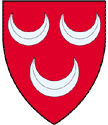 |
| Shield of the Chief of Clan Oliphant |
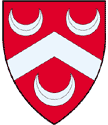 |
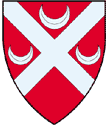 |
| Shield of Patrick Oliphant of Bachilton |
| Shield of Mr. Andrew Oliphant of Prinlis |
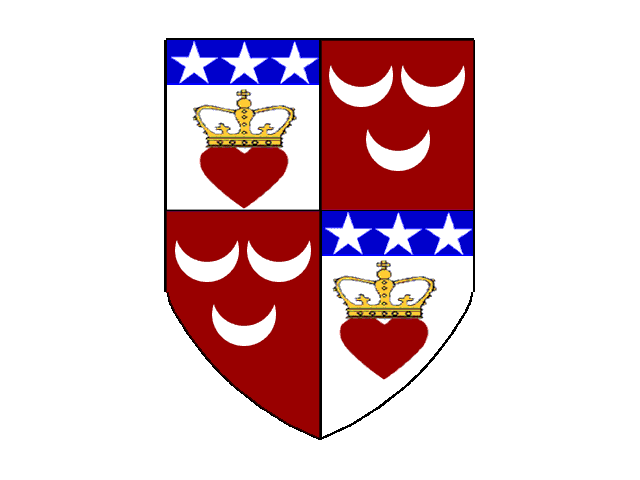 |
 |
| Shield of the Lord Mordington |
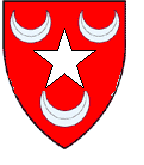 |
| Shield of Charles Oliphant |
| Shield of Laurence Oliphant of Condie |
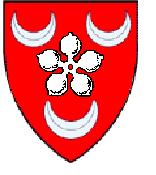 |
| Shield of William Oliphant of Culquhir |
OLIPHANT OF ARDBLAIR AND GASK, Laurence Arms: Gules; three crescents argent, in the middle fess point another crescent Or. Crest: A falcon perched proper Motto: "A Tout Pouvoir" meaning "All things are possible |
| Shield of Sir Laurence Oliphant of Gask |
| Shield of Laurence Oliphant of Ardblair and Gask |
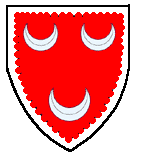 |
| Shield of the Oliphant of Kellie |
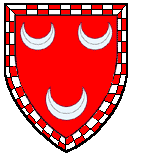 |
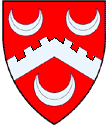 |
| Shield of the Oliphant of Langton |
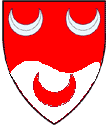 |
| Shield of Laurence Oliphant, Writer |
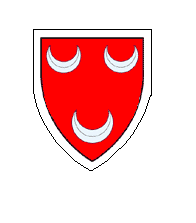 |
| Shield of Lawrence Oliphant, Esquire |
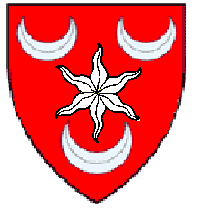 |
| Shield of Robert Oliphant of Rossie |
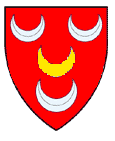 |
 |
| Shield of George Oliphant of Clasbainy |
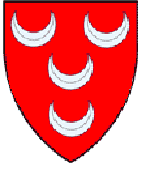 |
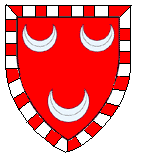 |
| Shield of James Oliphant of Kinnedder |
| Shield of David Oliphant |
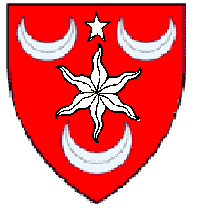 |

